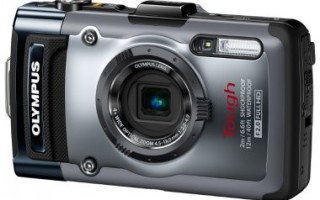Olympus TG-1 iHS Camera Review
Olympus TG-1 iHS Camera Review
Olympus has released a new rugged camera that is a contender for the most feature-rich camera in its class. This can be judged by its characteristics: high-aperture optics, fast autofocus, OLED display, and all other parameters do not lag behind modern trends. Let's see how it behaves in practice.
Olympus has the largest variety of rugged cameras. The company is a leader in this segment. It is worth noting that before the appearance of a flagship model this year, Olympus did not have a flagship model. The TG-820 iHS lacks GPS, despite its excellent security features. The lack of GPS in modern cameras is rather bad form. Note that top-end secure cameras from many manufacturers have long been equipped with a GPS receiver. This includes Panasonic and Nikon, which recently began producing its models in this segment.
So, what does the manufacturer want to please us with? A superficial acquaintance already suggests that the Olympus TG-1 iHS is designed to be a leader. It is equipped with a wide-angle aperture lens with an F/2 aperture, an OLED display with a resolution of 610 thousand dots, and a TruePic VI processor, which comes with mirrorless cameras and has proven itself to be the best. And, of course, don’t forget about the GPS module.
Don't think that the advantages end there. The camera copes with the loads when immersed under water to a depth of 12 meters. This is a good result, since competitive models give up already at 10 meters. It is worth paying attention to the large number of accessories. These are not only belts, cases and underwater boxes, which make it possible to dive to a depth of 35-40 meters. These are also converters: wide-angle and telephoto attachments, as well as attachments with which you can install photo filters. Now we can make a final conclusion that Olympus has brought to the market a flagship camera that currently has no competitors. Although it is worth looking at the test results.
Camera specifications.
| Olympus TG-1 iHS | |
|---|---|
| Image sensor | 1/2.3 inch CMOS |
| Matrix resolution, MP | 12 |
| Image File Format | Still image: JPEG (EXIF 2.3, DCF), 3D photo MPO Video: Motion JPEG |
| Focal lengths, mm | 4.5-18.0 (35mm format equivalent: 25–100) |
| Diaphragm | f/2-f/4.9 |
| Frame resolution, pixel | Photo: 1280×960, 640×480, 3968×2976, 3968×2976, 3264×2448, 2048×1536, 2560×1920, 1600×1200, 1920×1080 Video: 1920×1080 60/30 fps, 1280x720 60/30fps, 640x480 30fps |
| ISO | Automatic, 6400, 3200, 1600, 800, 400, 200, 100 |
| Shutter speed range, sec. | 1/4 - 1/2000 / Front view |
Front view without decorative nozzle
On the front of the body there is a lens with mounts for accessories, a flash window and an autofocus illuminator. The lamp in macro mode acts as an illuminator and also acts as a timer indicator when using the automatic shutter release.
On the back panel, to the right of the screen, there is a swing key that controls zoom, as well as a video key, a dial for switching shooting modes (by the way, it has a very quiet operation), a button for switching the camera to viewing mode, a round key for switching functions with a button for switching to quick menu in the middle, and a button to go to the main menu.
At the top is the power key. Next to it is the shutter button and the GPS receiver antenna. There are also two stereo microphones located on top.
On the bottom panel there is a tripod connector and a cover with a two-stage lock, under which there is a memory card and battery.
On the left end there is a speaker and connectors for connecting HDMI and AV/USB cables. USB is also used to charge the device. All connectors are covered with a small cover, which has two-stage protection. It is worth paying attention to the fact that Panasonic devices have a warning system for a loose lid, indicating that the device cannot be immersed under water. Olympus did not provide such a system in the TG-1 iHS, and this is a serious flaw. Thanks to such an alarm, a large number of protected cameras could be saved.
On the right side there is only a massive eyelet for attaching a lace or strap. A more massive mount can only be found on the Pentax Optio WG-2.
Olympus Tough TG-1 iHS

- Number of groups of optical elements: 7
- Number of optical elements: 9
- Digital Zoom: 4x
- Optical Zoom: 4x
- Focal length: 25 - 100 mm
- Aperture: F2 - F4.9
- Features: aspherical lenses, low dispersion lenses
- Number of effective megapixels of the matrix: 12 million
- Physical matrix size: 1/2.3″ null,1,”11218
- Sensor type: BSI CMOS
Buy
Here you can watch a video review of the Olympus Tough TG-1 iHS. Find out the characteristics, read reviews about the Olympus Tough TG-1 iHS.
Stores where you can buy this product and its analogues
Video reviews of Olympus Tough TG-1 iHS
- All 18
- Reviews 3
- Setting 1
- Tests 3
- Reviews 3
 Olympus TG 2_
Olympus TG 2_
Specifications Olympus Tough TG-1 iHS
* Check with the seller for exact specifications.
Lens
| Number of groups of optical elements | 7 |
| Number of optical elements | 9 |
| Face focusing | There is |
| Digital Zoom | 4x |
| Optical Zoom | 4x |
| Focal length | 25 - 100 mm |
| Diaphragm | F2 - F4.9 |
| Peculiarities | aspherical lenses, low dispersion lenses |
Matrix
| Number of effective megapixels of the matrix | 12 million |
| Physical matrix size | 1/2.3″ null,1,”11218 |
| Matrix type | BSI CMOS |
| Number of megapixels of the matrix | 12.7 million |
| Maximum resolution | 3968 x 2976 |
| Sensitivity | 100 - 3200 ISO, Auto ISO |
| Extended ISO values | ISO6400 |
Viewfinder and screen
| LCD screen | 610000 dots, 3 inches |
| Using the screen as a viewfinder | There is |
| Viewfinder type | absent |
Excerpt
| Manual shutter speed and aperture settings | No |
| Excerpt | 4 - 1/2000 s |
Light control
| Exposure compensation | +/- 2 EV in 1/3 stop increments |
| Exposure metering | multizone, spot |
White balance
| White balance | automatic, manual installation, from the list |
Flash
| Flash | built-in, up to 3.50 m, red-eye reduction |
Stabilization
| Electronic stabilization for video shooting | There is |
| Image stabilizer (still photography) | double, matrix shift |
Video and sound recording
| Max. video resolution | 1920×1080 |
| Video recording | There is |
| Recording audio comments | There is |
| Sound recording | There is |
| Video codecs | MPEG4 |
| Video recording format | MOV |
Interfaces and memory
| Built-in memory size | 8 MB |
| Memory card type | SD, SDHC, SDXC |
| Image formats | JPEG |
| Interfaces | USB 2.0, video, audio |
Shooting speed and modes
| Timer | There is |
| Macro photography | There is |
| Shooting 3D | There is |
| Shooting speed | 60 fps |
| Maximum series of shots | 100 for JPEG |
| Frame format (still photography) | 4:3, 16:9 |
Nutrition
| Battery capacity | 210 photos |
| Number of batteries | 1 |
| Battery type | your own |
Dimensions
| Weight (without batteries) | 221 g, with batteries |
| Size | 100x65x26 mm |
Additional Information
| Dust protection | from moisture |
| Camera type | compact |
| Additional features | tripod mount, GPS, HDR shooting |
* Check with the seller for exact specifications.
Pros and cons of the Olympus Tough TG-1 iHS
1.Waterproof 2.Fast lens 3.Excellent photos and videos in iAUTO automatic mode 4.Adequate flash power. 5.GPS 6.Quality video. 7.Excellent display. 8.Stabilization system
Waterproof, quick start of video recording, a large number of built-in scenes and filters for photos. Video recording can be made from almost every scene and with every filter.
1) Sturdy, fits comfortably in the hand, instant video recording is always available, accurate white balance under water, fast and accurate autofocus (by holding your breath at a depth of 5-6m you can take three frames in a row), in the air it shoots at the same level as a good point-and-shoot camera, comfortable presets. I was pleased with the quality of the pictures in the water in low light. The assembly is very high quality, even though it is China. In general, only PLUSES.
really waterproof! excellent design, convenient Full HD video recording, ability to attach a teleconverter
-waterproof case (in the sea, in the pool - just gorgeous, I haven’t tried it in extreme conditions -high photosensitivity -great macro mode -high battery level -GPS for geo-tagging -HDMI output allows relatives to show photos on the LCD) cable included in my package I didn’t have it when I bought it, but it came from the Xperia Neo.
1) Rugged body 2) Powerful flash 3) Barometer/pressure gauge/GPS 4) Easy controls 5) Interchangeable lenses 6) Aperture 2.0 7) Photo post processing 8) Non-slip surface 9) Convenient charging
Waterproof case, withstands shock loads, frost-resistant, good image stabilization, clear, non-glare screen, GPS, supports several card formats, usb and hdmi, hd video, does not weigh much
The camera is excellent, especially for those who don’t particularly like to carry heavy objects. It takes beautiful pictures at dusk, underwater in macro mode.
Excellent aperture for a digital compact, truly waterproof, many shooting modes.
Beautiful underwater photos, durable, practical for travel. We went to Croatia - simply masterpiece pictures. I recommend it to everyone!
1. There is no charging of the battery separately from the camera (see below).
2. There is no backlighting of the disk and control buttons in the dark.
3.No neck strap included.
4. Terribly weak battery, a second one is not included.
5. Power button instead of a lever.
6.Sizes too small to hold with wet hands.
7.In Video mode there is no “Pause” mode.
One significant thing is that during video shooting, when zooming, the microphone picks up the noise of the zoom motor and then everything is heard in the video.
And of course the price, I would like it to be 4-6 thousand cheaper. Its own proprietary micro USB connector.
Charging using the camera itself.
GPS to determine coordinates required connecting to a computer in a country where the Internet is very expensive. Overall a useless feature for me.
I didn’t notice any shortcomings, except that when there is a sharp temperature change, condensation forms on the lens
-Alas, after 2 weeks in my device while recording video, sounds of mechanical stabilization are heard, not critical.
- to charge you have to constantly open the plugs and charge through the wire; There is no separate charger.
1) The battery is simply terrible, you need to buy a spare one right away.
2) Lack of ability to change shutter speed and aperture in manual mode
3) Matrix is too small..
4) Rare freezing in salt water
The price is not low, but at the moment there really isn’t much to choose from (in terms of technical characteristics); on the other hand, others have no lower prices for much weaker models.
It blurs a little around the edges of the picture, the zoom is too small.
No Pause button in Video mode. A little confusing menu (but it's possible compared to others - I'm used to Sony)
The battery discharged quickly and had to be constantly charged.
Reviews of Olympus Tough TG-1 iHS
Thank you, your review will appear on the site soon.
Olympus TG-1 iHS - an application for leadership
Sergey Verveyko
| 09 August 2012 |
Olympus has one of the most complete lines of rugged cameras, and in general the company in this segment may not be a pioneer, but overall a leader. However, in 2012, before the appearance of the hero of the material, Olympus did not have a truly flagship model, because the TG-820 iHS camera, despite all its protective advantages, does not have a GPS module. The presence of a navigation system signal receiver has already become a rule of good manners for the most expensive rugged cameras, and all manufacturers have a top rugged model with GPS, starting with the main competitor - Panasonic and ending with Nikon, which has only recently entered into this segment of cameras.

So, in fact, what does the manufacturer want to surprise us with? Even a quick glance at the characteristics allows us to talk about an application for leadership in the segment. The Olympus TG-1 iHS is equipped with a wide-angle and fast lens with an ƒ/2 aperture, an OLED display with a resolution of 610 thousand dots, a TruePic VI processor, which the camera inherited from mirrorless cameras and has already been tested on compacts (models TG-820 iHS), and well Don't forget about the GPS module.
However, that's not all. The camera can withstand immersion to a depth of up to 12 meters, while direct competitors can operate at no more than 10 meters. It is also worth noting that there are a lot of accessories, and these are not only cases, belts and underwater boxes that allow you to dive to a depth of 40 meters, but also converters (telephoto and wide-angle attachments), as well as attachments that allow you to install filters. In general, Olympus has brought to the market a real flagship rugged compact, and judging by the characteristics, the camera does not yet have equivalent competitors. However, we’ll see what our tests show.
⇡#Technical characteristics declared by the manufacturer
| Olympus TG-1 iHS | |
|---|---|
| Image sensor | 1/2.3 inch CMOS |
| Effective number of points, MP | 12 |
| Image saving format | Still image: JPEG (EXIF 2.3, DCF), 3D photo MPO Video: Motion JPEG |
| Focal length range, mm | 4.5-18.0 (35mm format equivalent: 25–100) |
| Diaphragm | ƒ/2-ƒ/4.9 |
| Frame size in pixels | Photo frame: 3968×2976, 3264×2448, 2560×1920, 2048×1536, 1600×1200, 1280×960, 640×480, 3968×2976, 1920×1080 Video : 1920×1080 60/ 30 fps, 1280x720 60/ 30 fps, 640x480 30 fps |
| Sensitivity, units in ISO equivalent | Automatic, 100, 200, 400, 800, 1600, 3200, 6400 |
| Shutter speed range, s | 1/4 - 1/2000 / can and should be immersed under water, and to a very significant depth. Separately, it is worth noting the display protection - it is very thick, durable and, in addition to the presence of an anti-reflective and water-repellent coating, is not afraid of scratches, although it collects fingerprints instantly. It is worth noting that the smooth lining on the front panel also becomes covered with fingerprints quite quickly, although cleaning them is not difficult at all. |

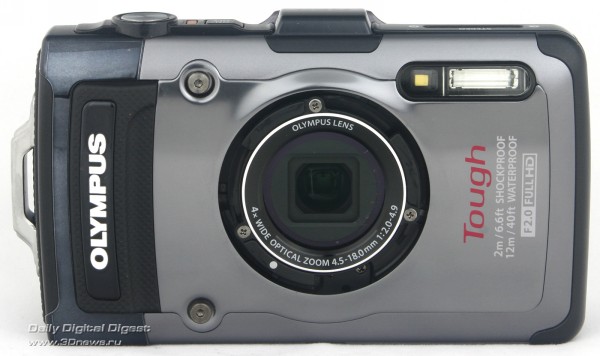
Front view without decorative nozzle
As already mentioned, in front there is a lens with a mount for installing accessories, a built-in flash window and an autofocus illuminator lamp, which acts as an illuminator in macro mode and also serves as an indicator of the automatic shutter release timer.

At the back, to the right of the screen, there is a zoom control rocker key, a video key, a shooting mode dial with a very tight move, a button to switch to playback mode, a round 4-position multifunction key with an enter/enter quick menu button in the center, as well as an enter key to the main menu.
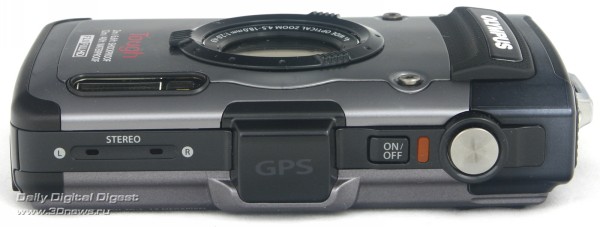
On top are the power and shutter keys, the GPS antenna, and a pair of stereo microphones located close to each other.

A tripod connector is installed at the bottom, and under a cover with a two-stage locking there are compartments for a memory card and battery.
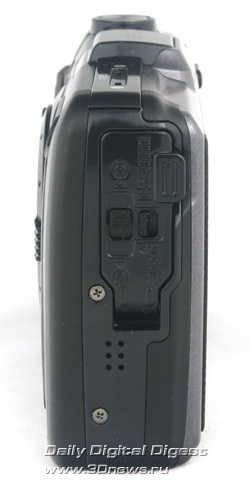

On the left is the system speaker, as well as connectors for connecting HDMI and AV/USB cables. The last connector is also used to connect a charger via a USB cable. Like the battery and memory card compartments, the connectors are hidden by a small cover with a two-stage lock. It is noteworthy that the same Panasonic devices have a warning system, which, upon noticing a lid that is not tightly closed, displays a hint on the screen that you should not shoot underwater. The Olympus TG-1 iHS does not have such a system - this is a significant flaw, because it was the absence of such warnings that ruined a considerable number of waterproof cameras.

On the right there is only a massive lanyard fastening, even, perhaps, a strap, but it is still far from the large belt with a huge carabiner on the Pentax Optio WG-2.
Test and review of the Olympus TG-1 iHS rugged camera

For those who like to travel with a camera that can withstand a variety of nasty situations, Olympus has the shockproof and waterproof Tough TG-1 IHS camera. In this review we will try to find out how good this camera is
# Technical Summary
Device type : Digital camera
Number of MPix: 12
Matrix size : 1/2.3″, 6.2 x 4.6 mm
Matrix type : CMOS
Max photo resolution : 3968 x 2976
Max video resolution: 1920×1080
Light sensitivity : 100-6400 ISO
Optical Zoom : 4x
Focal length : 25-100 mm
Aperture : f/2-3.9
Display : LCD 3″, non-touch
Memory card : SDXC
Video output : Yes, microHDMI
Battery : Li-Ion
Dimensions, WxHxD : 99×65.3×25.4 mm
Weight : 227 g
Additionally : Moisture-, sand-, frost-, shock-proof housing
The Olympus Tough TG-1 IHS is not your typical rugged compact camera. It looks more like a regular point-and-shoot camera, with the lens positioned in the center rather than in the corner, and it also has a fast f/2 aperture. The 12 megapixel TG-1 iHS can be submerged to a depth of 12 meters and still take pictures with full resolution at 5 frames per second, and also has a GPS module. Putting all this together, we get an excellent model that displaces the Nikon Coolpix AW100 from its position as a now former good buy for 12,000 among rugged cameras
# Design and features

The 4x zoom allows you to cover a good 25 - 100 mm field of view, which is slightly wider than with the 28 - 140 mm lens on the Canon PowerShot D20. More impressive is the f/2 aperture, which can capture 4 times more light than the f/3.9 lens found on the Canon D20, Nikon AW100 and Olympus TG-820. This allows you to shoot at faster shutter speeds without raising the ISO too high and taking advantage of the maximum field of view of the 25mm focal length, which is especially important underwater where refraction creates an additional 1.33x crop factor. If you need a wider frame, then you should use the fisheye converter, which Olympus offers for about 3500 rubles, it is also capable of working at a depth of up to 12 meters. You can also purchase a 1.7x teleconverter for about 3200 rubles, it will change the focus of the lens to 43-170 mm

The 3″ display is made using OLED technology, rather than the usual LCD. Even though it only has a 610k dot resolution, it looks as good as the similar 1030k dot LCD display on the Olympus TG-820. Simply because it is OLED, it has greater contrast and viewing angles, which makes it especially convenient on bright sunny days
The main camera controls are located to the right of the display. These include levers for zoom control, a shutter button and a joystick for camera configuration and quick access to settings. There is also a dial for changing shooting modes, which is sometimes missing on rugged cameras. The controls are not perfect and to change, for example, photosensitivity, exposure compensation, serialization and some other settings, you will still need to go to the menu. But if you are someone for whom this is not necessary and the preset modes on the mode disk are enough, then this will be enough
One of the shooting modes is Super Sport mode, which should be useful for cameras with a center-oriented lens. This mode on the TG-1 means it will use the fastest possible shutter speed of 1/2000 second in the right lighting and will produce 5 frames per second when the shutter button is pressed. This is useful for shooting sporting events so that the camera can be guaranteed to capture the most important moments
The TG-1 is designed to shoot underwater up to 12 meters, which is the same as the Pentax WG-2. It can also survive a fall of 2 meters, as well as withstand pressure of 1.5 MPa and operate at temperatures down to -10°C. If 12 meters is not enough for you, then you can buy a special protective box for the camera. It costs more than 9000 rubles, i.e. just like the camera itself, but it will allow you to dive with the camera and shoot up to 42 meters. If your requirements for protective cameras are not so high, then you can look towards the Panasonic Lumix DMC-TS20, which costs only 5500 rubles, but with it you can dive no deeper than 5 meters. This camera also has a lower resolution LCD display and does not have the warning lights and sound notifications found on the Olympus TG-1.
In addition to the GPS module, which takes 40 seconds to be ready, the camera also has an electronic compass and a pressure gauge. The first one points to the north and also allows you to see whether the camera is parallel to the horizon in its working position. The second one measures heights and underwater depths and will warn the owner when a depth of 12 meters is reached.

In addition to all other functionality, there is also an LED backlight located on the front panel of the camera. It is needed for two cases: it speeds up the operation of the autofocus system and can illuminate the subject during mark shooting. Of course, this does not work as well as on the Pentax Optio WG-2G GPS with six LED elements, but at least with the help of this backlight it is more convenient to shoot in marco mode
The TG-1 records video in a QuickTime container, i.e. *.mov, with a resolution of 1080@60fps/720@60fps. The footage is richly vibrant and smooth, exactly what you'd expect at 60fps, but if you look closely you can see the shaky hand effect. The camera has a microHDMI output for connecting it to a TV, and there is also a connector for a USB cable, which has two purposes - for synchronizing with a PC and for connecting to a charging adapter. The kit does not include a separate charger with a wire, which has long been a common occurrence.

Because If you have your own battery, you will need to charge the camera directly from the outlet or use a non-original charger to charge the battery outside the camera body. Memory cards of SDXC and, accordingly, SDHC/SD standards are supported


# Operation and testing
The Olympus TG-1 is an impressively fast camera. It can turn on and start shooting in less than a second, snapping full-resolution photos at 5 frames per second with shutter lag as low as 0.2 seconds
Shatter lag - the delay time between pressing the shutter button and the actual shutter release
The camera can take 100 pictures at 3 megapixels at 15 or 60 frames per second. Olympus says that at 5FPS at maximum resolution the camera can take 25 shots in a row, but testing has shown that you can take almost twice as many photos with a high-speed card like the SansDisk with a 95 MBps write speed without any signs of camera slowdown. There is only one camera that can compete with the TG-1 in this regard, and that is the TG-820 from Olympus again. It takes 1.5 seconds to start shooting, including turn-on time, can shoot frames in 5-shot bursts like the TG-1, has a shutter lag of 0.1 seconds and supports the same 15 and 60 bursts.

The only area where the TG-1 falls a little short is in image sharpness. According to Imatest, its lens sees 1,656 frame height fringes in the mid-center area, which is slightly short of the minimum 1,800 fringes of a good sharp image. Even though the fast f/2 lens captures a lot of light and is sharp at a fixed point in excess of 2,300 fringes, overall blur in the corners and sides ruins the overall score. If sharpness is more important to you than aperture, then Nikon AW100 is the best choice; according to the results of testing, it has 2166 stripes
Imatest also allows you to measure noise in images that can appear at higher light sensitivities. The TG-1 produces no more than 1.5% noise at ISO1600, maintaining good image quality. You can raise the light sensitivity to a maximum of ISO6400 and the camera will continue to shoot well, but this is only thanks to a good lens with an aperture of f/2. Not every camera with a good ISO rating in Imatest is the same - the Pentax WG-2 also keeps noise levels on par at ISO1600, but does so with a lot of smaller quality bits of image, something the TG-1 avoids


# Conclusion
If you're trying to find the best rugged compact camera, you might be hard-pressed to find anything better than the Olympus Tough TG-1 IHS , and unsurprisingly, the camera deserves a Top Pick award. A fast lens with an f/2 aperture, a robust body, excellent quality at high ISO and high speed are worth the money, with a price of almost 12,000 rubles, this is almost the most expensive rugged compact camera available on the market. However, if you're willing to sacrifice body durability and aperture speed, you can opt for less expensive cameras like the Canon PowerShot D20 and Olympus Tough TG-820, which offer a little more sharpness but will be slower. If your budget is even tighter, then as an option you can consider the Panasonic Lumix DMC-TS20 for about RUR 5,500, which has only basic capabilities and does not have the strength and security of the Olympus TG-1
Olympus TOUGH TG-1 - the flagship of the shockproof series
Olympus Press Release
Great shots from 12 meters deep?
Easy - with Olympus TG-1!
The lens and display of the flagship TOUGH TG-1 series are unbeatable
Olympus presents a new product in the shockproof TOUGH series, the new flagship of the line - the Olympus TG-1 camera. Olympus has equipped the TG-1 with a high-speed, fast, wide f2.0 lens that can take excellent quality photos even in low light underwater up to 12 meters deep. The TG-1, like the entire TOUGH line, is waterproof*, shockproof* and frostproof*. The stylish metal body combined with many technical innovations make the new product an indispensable companion for lovers of risky adventures and diving enthusiasts. For experienced photographers, waterproof converters are available: Fisheye and Teleconverter (via adapter). To ensure maximum functionality, Olympus engineers incorporate the latest technical developments into their products, and the Olympus TG-1 is no exception. iHS technology (High Performance, High Sensitivity, High Speed), high-contrast OLED display with anti-glare coating, GPS module, electronic compass, this is not a complete list of the impressive characteristics of the new flagship. The Olympus TG-1 camera has also acquired three new shooting modes: “Low Light”, “Super Sports” for shooting dynamically moving objects and “Super Macro” for shooting from a minimum distance. The camera will go on sale by the beginning of the holiday season - early June 2012.
Let there be light
Many people believe that rugged cameras suffer greatly in image quality, and choose them only for their shock-resistant characteristics. With the new TG-1, you don't have to compromise because the Olympus TG-1 is not only a super rugged camera.
Featuring a fast, high-speed f2.0 lens, powerful TruePic VI GPU, and a high-sensitivity 12MP CMOS sensor, this compact camera delivers the kind of true-to-life images that other rugged models in the same price range can't match. The new Olympus TG-1 has the record-breaking FAST AF autofocus used in the Olympus PEN series cameras, which will allow you to take sharp pictures of fast-moving objects and shoot Full HD video of good quality.
Unlike most compact cameras, the Olympus TG-1 is compatible with waterproof converters (via an adapter). The Fisheye converter allows you to take wide-angle, dynamic shots in low light underwater. Using the Teleconverter, you can increase the optical zoom of the lens up to 6.8x. This results in sharp photos with blurry backgrounds. The presence of the SR zoom function in the camera allows you to get an additional magnification of up to 13.6x.
Enjoy the shooting process
The TOUGH series is designed for those who are not used to deviating from their goals. With the flagship TG-1, you can go on the most risky journey - to the tops of the Alps or to the bottom of a tropical lagoon, without fearing for the safety of your camera. The TG-1 model is resistant* to loads up to 100 kg, shockproof* up to 2 meters, withstands immersion to a depth* of up to 12 meters and operates in the cold at temperatures * down to -10°C. In addition, the new TG-1 has many outstanding technical features that make it easy to shoot video and take stunning photos, even in the most challenging conditions. Thus, the “Low Light” mode automatically increases the shutter speed of the lens, as a result of which there will be no blurry, unclear outlines in your photos in low light. And with the “Super Macro” mode, you have the opportunity to shoot close-up objects from a distance of just 1 cm from the lens.
Outstanding Features:
Strength
- Resistant* to loads up to 100kg
- Water resistance* up to 12m
- Impact resistance* up to 2 m
- Frost resistance* up to -10°С
- Dual locking mechanism and metal housing to protect battery compartment, memory card and connectors
- Special glass to protect the lens
- Water-repellent and scratch-resistant coating
- GPS and Electronic Compass with unique three-sensor technology for confident orientation
- Improved clap control for controlling the camera by tapping the body, especially useful when shooting with gloves
- Built-in pressure gauge to control immersion depth
- LED backlight for illuminating underwater and macro objects
Image quality
- 4x wide-angle optical zoom (25-100mm**) for shooting any scene
- Back-illuminated CMOS sensor with 12 MP resolution
- High-speed f2.0-4.9 lens with wide aperture for shallow depth of field and maximum sharpness in low light
- Powerful TruePic VI graphics processor for fast performance and excellent image quality
- iHS technology for excellent results in all conditions
- Low Light shooting mode for sharp shots in low light
- Super Sports shooting mode for sharper sequential photos of fast-moving subjects
- Super Macro shooting mode for stunning close-up shots
- Shooting Full HD 1080p video with sound and excellent quality for this type of camera
- Video Stabilizer function for shooting Full HD videos on the go with maximum sharpness
- Dual Image Stabilization
- Backlight HDR function
- Magic filters for creative effects: Punk, Pop Art, Pinhole, Drawing, Soft Focus, Fisheye, Starry (photo only), Watercolor, Reflection, Miniature, Mosaic (photo only), Dramatic
- Improved i-Auto mode and AF tracking function
- Face Detection and Advanced Shadow Technology
- Ultra-high resolution lens for digital zoom without loss of image quality
- 3D photo shooting mode
- ISO 100-6400
- Beauty Mode
- Animal Detection mode for automatic focusing when shooting animals
- Panorama function
- Scene modes to customize the camera for specific situations (Landscape, Night, Underwater)
Storage and viewing
- High-quality 3.0” OLED display (610,000 dots) for comfortable framing and viewing
- Slot for SDHC and SDXC memory cards***
- Eye-Fi memory card support for wirelessly transferring pictures to a website or PC
- “Photo surfing” and software for organizing and viewing photos by people, places and events
- HDMI interface for controlling the camera using a television remote control when viewing pictures on a compatible TV
Other features
- Built-in flash
- Built-in user manual
- Charging the battery from USB
No matter how you crack your nuts: Olympus Tough TG-1 iHS rugged camera
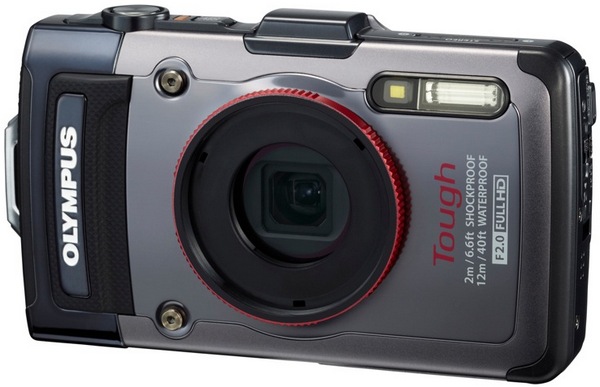
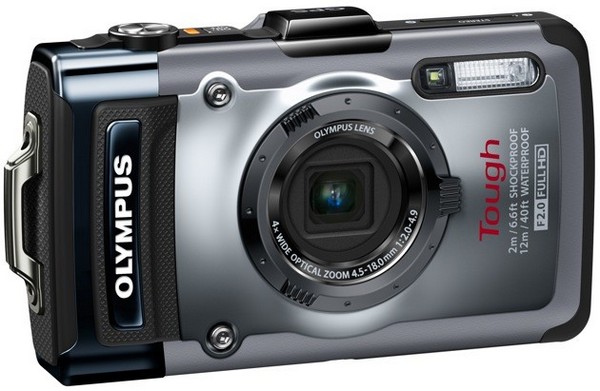

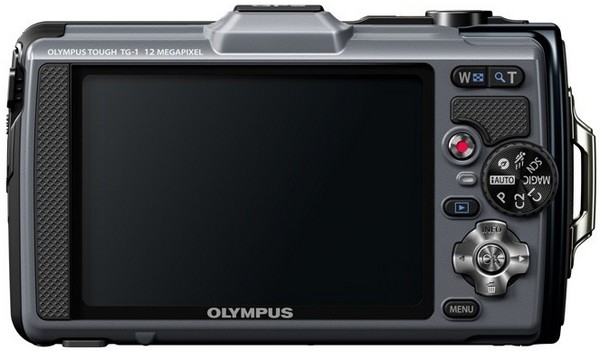

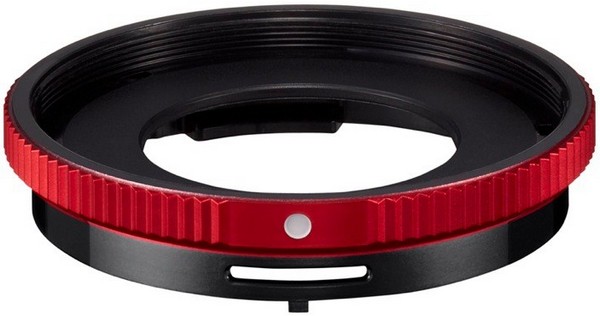
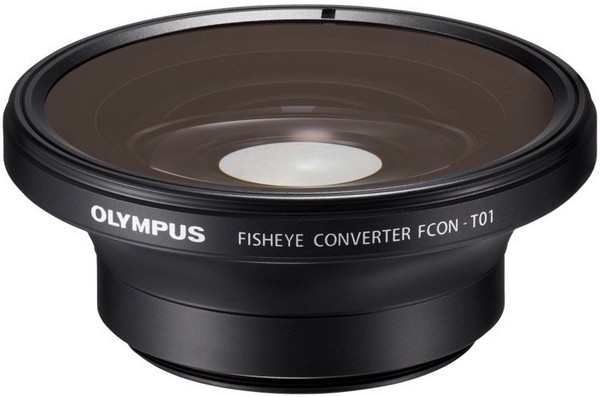

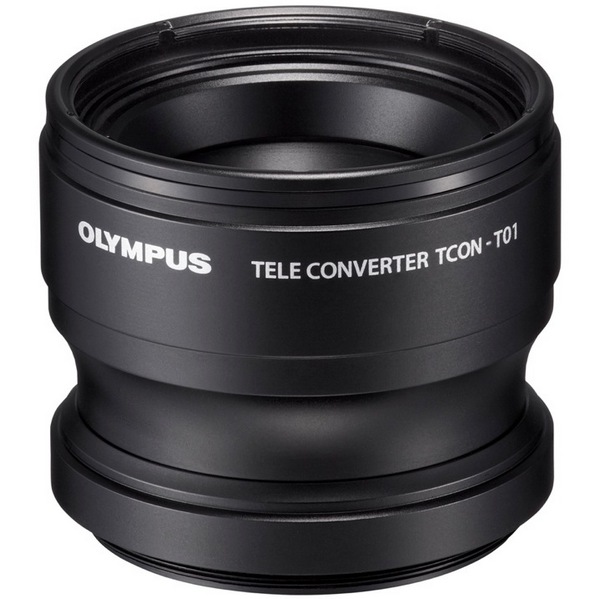
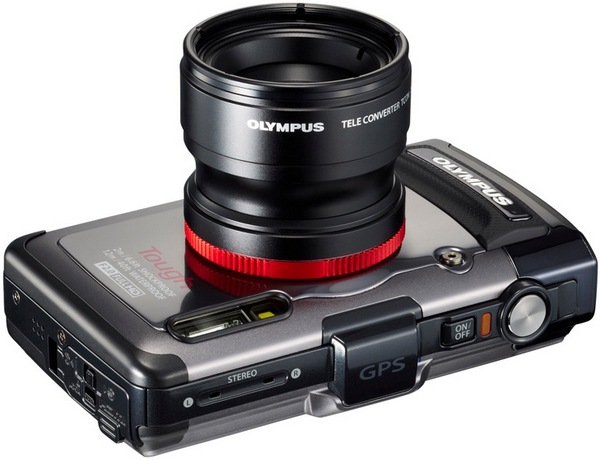
Subscribe to our fun channel on Telegram so you don't miss anything.
“Instead of a viewfinder - a 3-inch OLED screen” Hm. Does this mean that the camera simply won’t turn on at “minus a little”? For example, in “myushki” this problem was relevant, while other point-and-shoot cameras with classic video finders worked with a bang.
![]()
good old soap kodak design! nostalgia struck 🙂

I will smoke, but I won’t stop drinking. I'm interested in accessories, but the offsite doesn't have an adapter or teleconverter (I'm interested in the latter). But in the virtual vastness I found its characteristics - zoom up to 6.8X and the ability to dive with it up to 45 meters (submariners have a weak point - contact of the objective part with water). There is a high-speed camera - at 3 MP 60 frames. All that remains is to buy diving equipment, a yacht and a red one (not a fox, but a fox). ) Oh, if GPS still worked under water, then we could grow gills and not venture out into this world. pi si: bells and whistles will be available in July, again for the continent free (from us).

What's the point of a teleconverter if the camera dies at 10 meters. boxing + simple canon is the best budget solution
all of the above is my IMHO
![]()
I will smoke, but I won’t stop drinking. And you read here https://ru.wikipedia.org/wiki/%CF%EE%E4%E2%EE%E4%ED%E0%FF_%F1%FA%B8%EC%EA%E0 Your IMHO is neither which is not justified, well, at least in part of your “budget decision” - it will die in the same way if there is no special lighting and super clear water (but its properties remain the same). My opinion:)

justified by practice, until boxing starts to sweat, Olympus will die long ago. However, I recommend checking out special forums on underwater photography, there are a lot of reviews about the water-loving nature of Olympuses
all of the above is my IMHO
![]()
I will smoke, but I won’t stop drinking. I agree, but we did not understand each other. I don’t argue about the waterproofness of the Olympus, although in 2007 I used an Olympus from the old series, but up to 3 meters. I'm talking about quality - at 10 meters the quality is unleveled, so there is no point in going downhill, even with your budget solution, even with this device. Well, up to 10 meters, it’s not a fact that Olympus will die.

And it would seem, what does Luzhkov have to do with nuts?
A couple of weeks before the announcement, Olympus sent out a box containing them to many journalists and bloggers. two nuts! So the title is spot on, yay.
Olympus Tough TG-1 iHS Review

Main Features
- 12MP – 1/2.3″ BSI-CMOS Sensor
- ISO 100 - 6400
- 25-100 mm F2.0-4.9 Zoom Lens
- Sensor-shift Image Stabilization
- 3″ Fixed Type Screen
- 3 fps continuous shooting
- 1920 x 1080 v >230g. 112 x 67 x 30 mm
- Weather Sealed Body

Olympus TG-1 iHS Overview
First introduced in May 2012, Olympus Tough TG-1 iHS is a 12.0MP Waterproof camera with a 1/2.3″ (6.17 x 4.55 mm) sized BSI-CMOS sensor.
Olympus TG-1 iHS is a member of Olympus's TG-X series of cameras. Below you can see the latest models in this series and how their main specs have changed with each new version.
| Model | Release Date | Sensor | Max FPS | Dimensions | Weight | |
|---|---|---|---|---|---|---|
 |
Olympus TG-6 | 2019 | 12.0MP - 1/2.3″ | 20.0 fps | 113 x 66 x 32mm | 253g |
 |
Olympus TG-5 | 2017 | 12.0MP - 1/2.3″ | 20.0 fps | 113 x 66 x 32mm | 250g |
 |
Olympus TG-4 | 2015 | 16.0MP - 1/2.3″ | 5.0 fps | 112 x 66 x 31mm | 247g |
 |
Olympus TG-3 | 2014 | 16.0MP - 1/2.3″ | 5.0 fps | 112 x 66 x 31mm | 247g |
 |
Olympus TG-2 iHS | 2013 | 12.0MP - 1/2.3″ | 5.0 fps | 111 x 67 x 29mm | 230g |
Check the link below to compare specs of the latest cameras in this series:
Olympus TG-6 vs TG-5 vs TG-4 vs TG-3 vs TG-2 iHS
Olympus TG-1 iHS has an Overall Score of 39/100 and ranked #250 out of 627 in Compact cameras (Top 10 Compact), and ranked #776 out of 1190 in all Cameras (Top 10 Overall).
Olympus TG-1 iHS Compared to other Compact Cameras
Now let's get in to more details of our Olympus TG-1 iHS review by analyzing its specs and features and listing out its pros and cons compared to average competitor cameras in its class.
| Crush Proof up to 100kgf |
| Image Stabilization |
| 1920 x 1080 Max Video Resolution |
| Built-in GPS |
| Face Detection Focusing |
| 610k dots LCD Resolution |
| Long Battery Life (350 shots) |
| 230g Light Body |
| Environmental Sealing |
| 25mm Wide Angle Lens |
| Fast 2.00 Lens at Wide |
| 3D Shooting Capability |
| Panorama Shooting |
Buy Olympus TG-1 iHS from AMAZON or B&H PHOTO
| No Wireless Connection |
| No Articulating Screen |
| No External Flash Shoe |
| No Touch Screen |
| No Built-in Viewfinder |
| No RAW Shooting |
| Low Resolution Sensor: 12.0MP |
| Only Unknown Focus Points |
| Slow Continuous Shooting: 3.0fps |
| No Manual Focusing |
| No Manual Exposure |
| Slow Lens at Tele: f4.90 |
Olympus TG-1 iHS has a 12.0MP 1/2.3″ (6.17 x 4.55 mm) sized BSI-CMOS sensor and features TruePic VI processor. You can shoot at maximum resolution of 3968 x 2976 pixels with aspect ratios of 4:3 and 16:9. TG-1 iHS has a native ISO range of 100 - 6400 but unfortunately, Olympus TG-1 iHS doesn't have RAW file support. If you need a Compact camera with a RAW support, consider Nikon Coolpix P7800 or Fujifilm X30 in the same price range.
Olympus TG-1 iHS is not the highest resolution Small Sensor camera. Kodak Astro Zoom AZ651 with its 21.0MP sensor is leading in this class. Check the comparison of Olympus TG-1 iHS vs Kodak Astro Zoom AZ651 or take a look at Highest resolution Compact cameras list.
Let's look at how the size of the Olympus TG-1 iHS's 1/2.3″ sensor compares with other standard sensor sizes.

